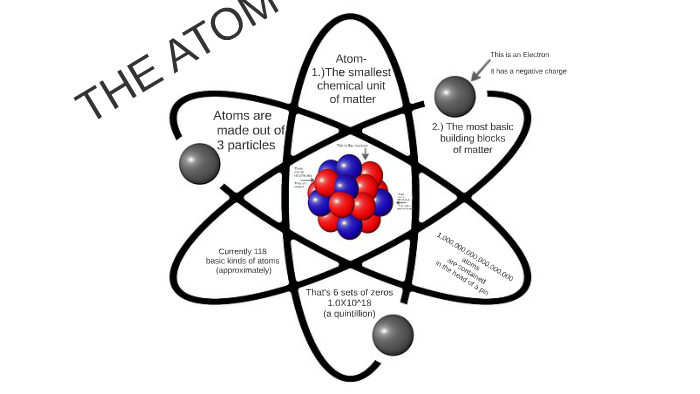

This is the doctrine of continuity or homoeomery. One was that matter was infinitely divisible without losing its distinctive and individual properties. Two opposite doctrines of the constitution of matter were held by the ancient philosophers. Primarily, the smallest particle of matter which can exist the ultimate and smallest division of matter, in physics, sometimes the smallest particle to which a substance can theoretically be reduced in chemistry, the smallest particle of matter that can exist in combination with other atoms building up or constituting molecules. a privative, and temno, cut indivisible). Includes the Catholic Encyclopedia, Church Fathers, Summa, Bible and more all for only $19.99.
#Are atoms the smallest particles of matter full#
Please help support the mission of New Advent and get the full contents of this website as an instant download. Perhaps all of the universe's smallest things are roughly the size of the Planck length.įollow Clara Moskowitz on Twitter or LiveScience. "At the Planck length we expect quantum gravity takes over." "It corresponds to the distance where the gravitational field is so strong that it can start to do things like make black holes out of the energy of the field," Parker said.

This scale is also thought to be the demarcating line between general relativity and quantum mechanics. According to the uncertainty principle, no instrument should ever be able to measure anything smaller, because at that range, the universe is probabilistic and indeterminate. The Planck length is far and away too small for any instrument to measure, but beyond that, it is thought to represent the theoretical limit of the shortest measureable length.

Superstrings, singularities, and even grains of the universe could all turn out to be about the size of the "Planck length." Ī Planck length is 1.6 x 10^-35 meters (the number 16 preceded by 34 zeroes and a decimal point) - an incomprehensibly small scale that is implicated in various aspects of physics. That would make singularities roughly the size of superstrings, if they exist. "Most likely they are maybe a million million times or even more than that smaller than the distances we've seen so far." "My guess is that are quite a lot smaller than a quark, but I don't believe they're of infinite density," Parker told LiveScience. They think this infinity is the product of an inherent conflict between two reigning theories - general relativity and quantum mechanics - and that when a theory of quantum gravity can be formulated, the true nature of black holes will be revealed. At least, according to the current laws of physics.īut most experts don't think black holes are really infinitely dense. Black holes are formed when matter is condensed in a small enough space that gravity takes over, causing the matter to pull inward and inward, ultimately condensing into a single point of infinite density. In that case, two particles wouldn't be able to come infinitely close to each other because they would always have to be separated by the minimum size of a grain of space.Īnother contender for the title of smallest thing in the universe is the singularity at the center of a black hole. Yet scientists still have no experimental evidence that string theory is correct.Īnother way of solving the point problem is to say that space itself isn't continuous and smooth, but is actually made of discrete pixels, or grains, sometimes referred to as space-time foam. That "loophole" appears to solve some of these problems of infinities, making the idea appealing to physicists. Nothing can get infinitely close to a loop of string, because it will always be slightly closer to one part than another. The theory posits that all particles, instead of being point-like, are actually little loops of string. Because you can get infinitely close to a point, the forces acting on it can become infinitely large, and scientists hate infinities.Īn idea called superstring theory could solve this issue. But point-like objects complicate the laws of physics. In experiments, teensy, tiny particles like quarks and electrons seem to act like single points of matter with no spatial distribution.


 0 kommentar(er)
0 kommentar(er)
